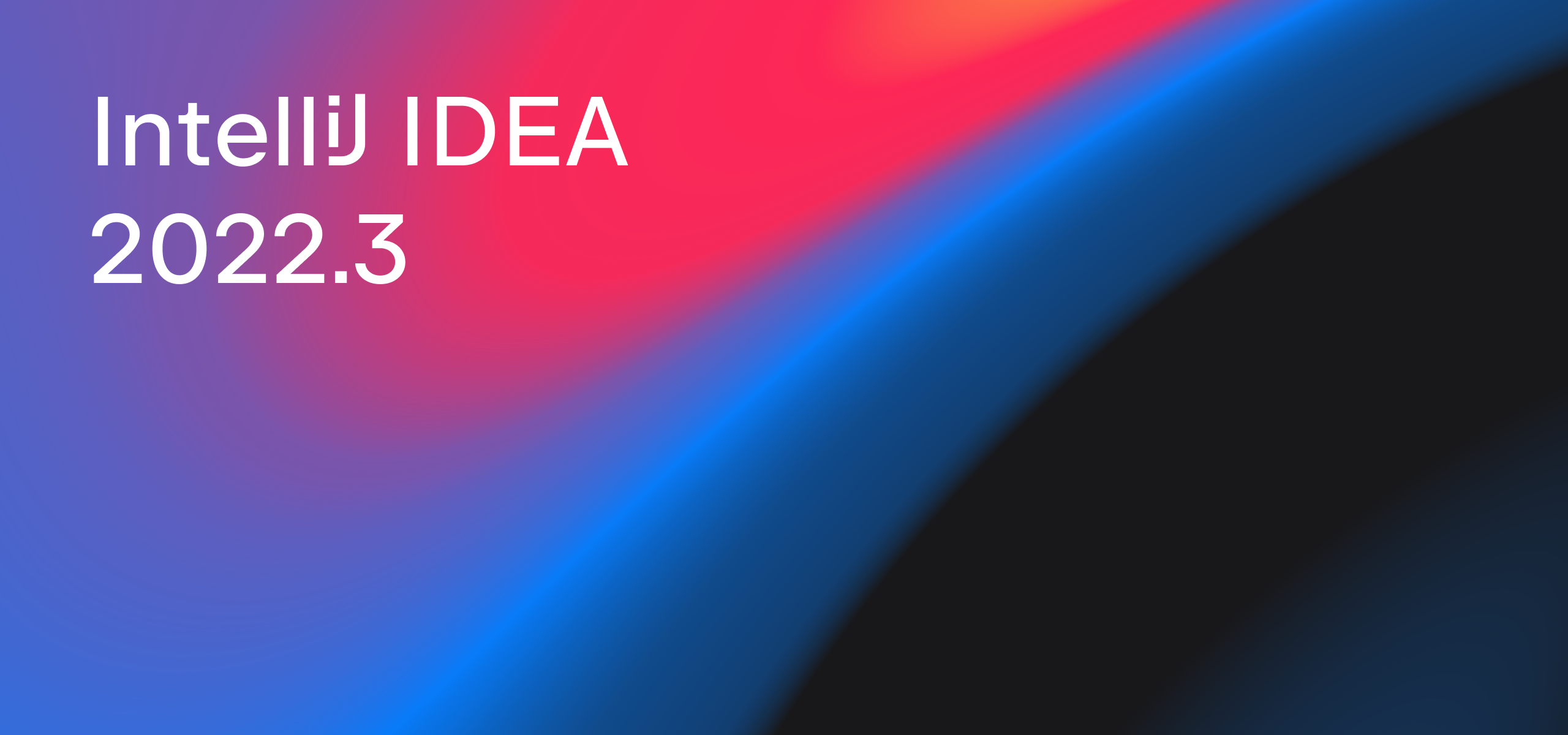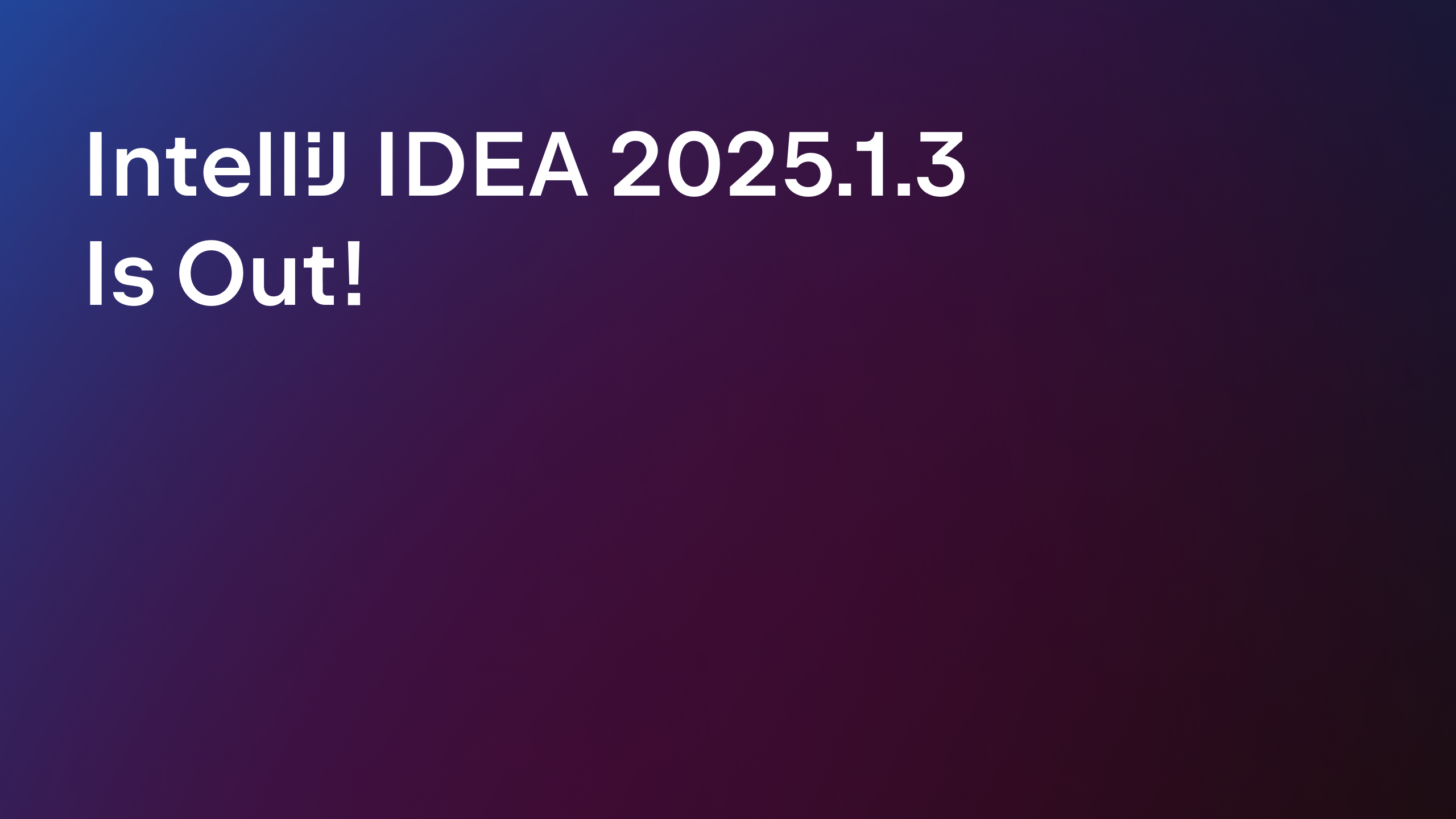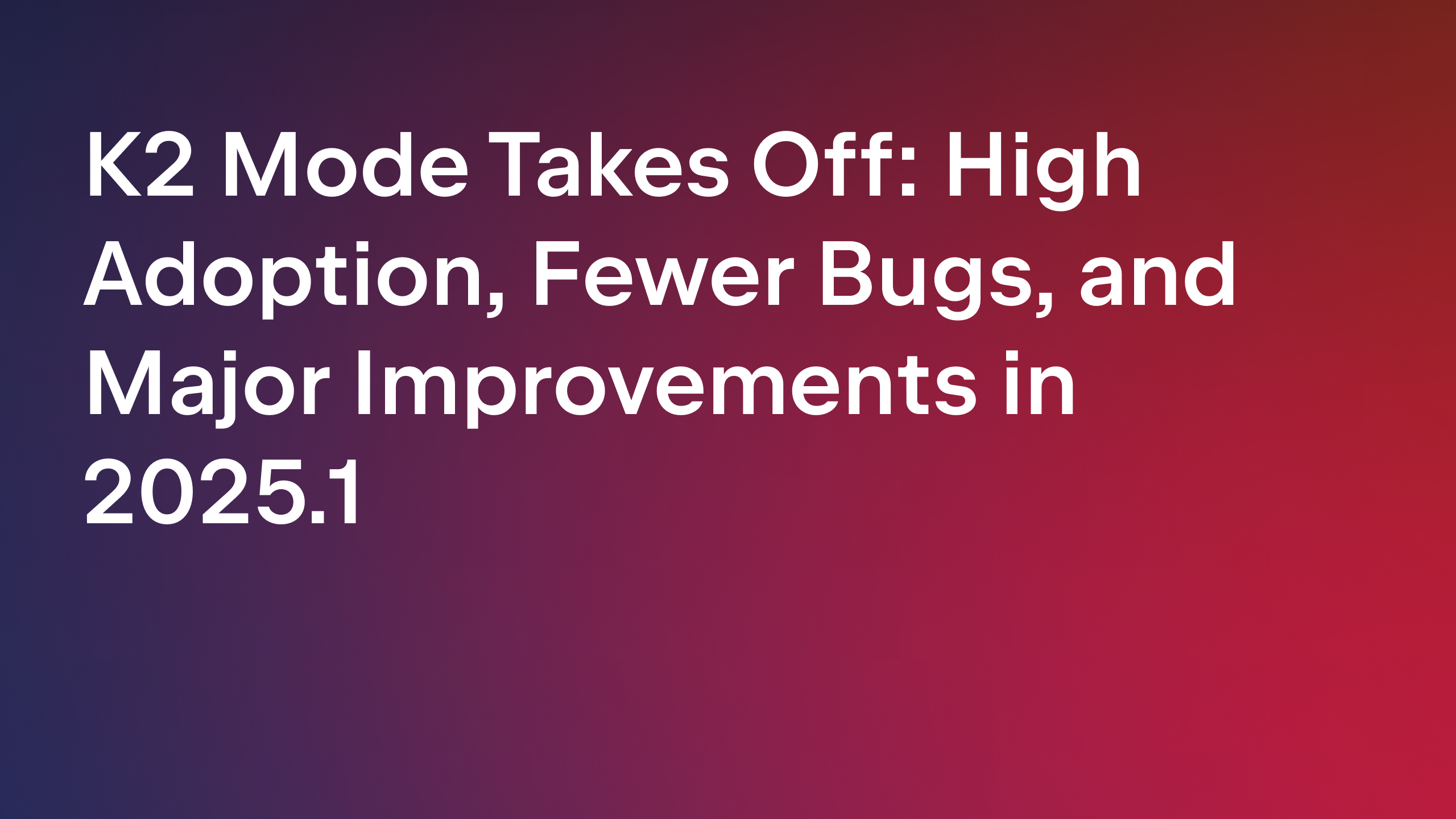IntelliJ IDEA
IntelliJ IDEA – the IDE for Professional Development in Java and Kotlin
IntelliJ IDEA 2022.3 Is Out!
IntelliJ IDEA 2022.3 is now available with numerous improvements and cool new features!
You can download the new version from our website, update directly from the IDE or via the free Toolbox App, or use snaps for Ubuntu.
In this new version you can preview the completely reworked look and feel of the IDE by switching to the new UI using a setting. It also brings a new Settings Sync solution for synchronizing and backing up your custom user settings. Additionally, IntelliJ IDEA Ultimate offers a new way to work with projects in WSL 2, new actions for Spring beans autowiring and OpenAPI schema generation, and long-awaited Redis support.
This blog post covers these and other noteworthy updates introduced in IntelliJ IDEA 2022.3.

Key updates
- In IntelliJ IDEA 2022.3 you can switch to the new UI using a setting and preview the IDE’s completely reworked look and feel while working on your projects. Learn more about our plans concerning this change in this blog post.
- The new Settings Sync plugin is now available for all IntelliJ-based IDEs (except Rider), both the free and paid editions. The new solution is capable of syncing most of the shareable settings from the platform, bundled plugins, and some third-party plugins. For more details about the new Settings Sync plugin and the migration process, refer to this article.
- IntelliJ IDEA Ultimate 2022.3 offers an alternative way to work with projects running in WSL 2 file systems. Instead of running a full IDE on Windows, your IDE backend will launch directly in WSL 2 itself. You then simply connect to it the same way you would connect to any remote machine when using remote development in IntelliJ IDEA.
- IntelliJ IDEA Ultimate 2022.3 provides new actions to easily autowire Spring beans right from where you need them. Also, you can now instantly generate an OpenAPI definition for Spring controllers or JAX-RS resources. For more details about these improvements, refer to this blog post.
- IntelliJ IDEA Ultimate 2022.3 adds the long-awaited support for Redis. See the details in this blog post.
User experience
- There’s a new option to drag tool windows out of the main window and dock them to floating editor tabs.
- Preview of intention actions is switched on by default in IntelliJ IDEA 2022.3 so that you can instantly see how your code will be altered once you apply the IDE’s suggestions.
- Search Everywhere results now provide a better user experience. Their behavior is more predictable and the selection of the elements you’re searching for is more accurate. Also, machine-learning ranking is now enabled by default for the Files tab, resulting in more accurate results and shorter search sessions.
- In the Preview tab of the Find Usages tool window, there are now Similar usages clusters which group usages based on their structural similarity. This is done to provide you with more insightful information about how a code element is used in your project.
- IntelliJ IDEA 2022.3 provides the ability to read code in your preferred style, even if it differs from the file’s current formatting.
- The appearance and behavior of tips of the day has been reworked to make them more useful and easier to digest. Learn more.
- We’ve implemented a few UI improvements to Bookmarks. It is once again possible to bookmark files from editor tabs, and you can add all files in all open tabs to Bookmarks.
- We’ve made notable performance enhancements to optimize the IDE’s startup experience, improve UI responsiveness, and speed up indexing.
Editor
- We’ve improved the copy-cut-paste behavior. The paste action now adds the contents of the clipboard above the current line, not at the caret.
- There’s a new setting that lets you disable the selection of the copied line after invoking the copy action with no selection.
- We’ve implemented Code Vision inlay hints for JavaScript and TypeScript.
Java
- We’ve made a range of changes to Java inspections and added new ones to protect your code from possible hazards and errors. To learn more about other Java-related improvements, read this blog post.
- IntelliJ IDEA 2022.3 supports new features from Java 19, including record patterns and the changes to pattern matching for switch expressions.
Kotlin
- IntelliJ IDEA 2022.3 now fully supports the features introduced in Kotlin 1.7.20, including the new ..< operator and data object declarations.
- We’ve optimized cache and index usage, making code analysis faster and more stable. Also, the code completion algorithm in .gradle.kts files has been improved.
Scala
- IntelliJ IDEA 2022.3 provides better Scala 3 support. The IDE now supports parameter untupling and quoted patterns, and it features many improvements to the support for match types and type variables.
- The Parameter info popup is now displayed for type parameters and provides more insightful data about them.
- There’s a new inspection that detects public classes, methods, or fields that can be private, and proposes a corresponding quick-fix.
- There’s a new quick-fix that lets you add an unresolved symbol to the list of the method’s parameters.
- For projects that require the compile order to be first Java, then Scala, and use SBT or Maven, the IDE keeps the order after refreshing the project from the build script and doesn’t change it to “Mixed”.
Profiler
- We’ve introduced UI improvements for the Flame graph. The sequences of calls that take the vast majority of their parent time and standard library method implementations are now grouped and shown as collapsed lists. Also, the popup is now more responsive and features a scale helping users to stay focused on the call’s duration relative to the total execution time.
- As of v2022.3, native calls are not collected and are excluded from the snapshot to reduce the number of calls and make it easier to investigate the most common performance issues. You can enable them back in Settings/Preferences | Build, Execution, Deployment | Java Profiler.
Version Control Systems
- We’ve redesigned the Review list for GitHub and Space to help reduce cognitive load and provide the most important information about requests at a glance. We’ve also unified its look and feel across all supported review platforms.
Build tools
- IntelliJ IDEA 2022.3 introduces improvements for working with build.gradle files in Groovy projects. Learn more in this blog post.
- With IntelliJ IDEA 2022.3, we’ve introduced experimental Maven import functionality using the new IntelliJ Workspace Model API. Learn more.
- Starting from v2022.3, we’re unbundling support for Maven2, making it available through a separate plugin.
Run / Debug
- We’ve improved the Data Flow Analysis (DFA) functionality in the Java debugger. Now, when the analyzer can predict that a particular branch of the code won’t be executed, it will gray out that part of the code.
- IntelliJ IDEA 2022.3 lets you manage which annotations in your project will be used to exclude methods from coverage statistics.
Frameworks and technologies
Please note that the following features and updates introduced to support working with frameworks and technologies are only available in IntelliJ IDEA Ultimate.
- IntelliJ IDEA 2022.3 fully supports Jakarta EE 10.
- The IDE now features improved code insight functionality for the JPQL language and supports the latest Hibernate 6.1 APIs.
- We have extended the code insight functionality for working with Liquibase tools.
- This update adds a new inspection that checks bean injection points and reports missing or ambiguous dependencies. We’ve also improved navigation to injected dependencies and inspections.
- JSON fragments are now injected into Micronaut MongoDB query annotations. IntelliJ IDEA also provides code highlighting for operators and parameters, as well as code completion for fields and operators.
- With v2022.3 it is now possible to generate OpenAPI documentation for Ktor projects.
- We’ve improved the editing experience for YAML files. There’s a new quick-fix to suppress inspections with a comment in YAML files and a new convenient option to fold multiline comments.
- The HTTP Client now supports script blocks that are executed before requests. You can generate some data before request execution and put it in the final request using variables.
- IntelliJ IDEA now provides the сrypto API, making your code capable of computing md5 or sha1 hash values for HTTP requests.
- We’ve added support for gRPC metadata in the HTTP Client, so it is now possible to pass metadata as request headers.
- The HTTP Client now provides better formatting options for requests with long URLs.
Docker
- As of v2022.3, IntelliJ IDEA supports connections to Docker that run in WSL.
- There is a new Pull Docker image intention action allowing you to pull a required image without running it from a Dockerfile, docker-compose.yml, or from tests that use Testcontainers.
- IntelliJ IDEA now fully supports .dockerignore files, including code highlighting and completion.
- The IDE now supports the heredoc format in Dockerfiles.
- It’s now possible to set up additional Docker connections using Docker Contexts, if you already have the settings for them in your Docker config file.
- Since Docker Machine has been deprecated by Docker, we removed it from the list of supported connections. If you’re an active Docker Machine user, you can still connect to it with an API URL.
Remote development and collaboration
- Actions that are unavailable to guests during Code With Me sessions are now clearly marked.
- The remote development functionality of IntelliJ IDEA Ultimate 2022.3 offers Beta support for Linux ARM64 as a backend.
- The port forwarding interface now features a full overview of the open ports along with their statuses, as well as the option to add or remove ports.
- The overview of recent SSH projects has been completely reworked.
QA tools
- The Aqua plugin, which provides advanced support for UI automation, lets you use the Web Inspector in two modes: either inside the IDE or in a separate window.
- The Aqua plugin provides a new Web Inspector feature – the locator evaluator. It highlights all of the elements it points to on the web page and tells you how many matches there are.
- IntelliJ IDEA Ultimate with the Aqua plugin now provides code completion for locators from a web page.
- It’s now possible to navigate to elements on a web page using the Ctrl+Click / ⌘+Click shortcut or a context menu action.
Database tools
- It’s now possible to filter objects when using quick search in the Database Explorer.
- With v2022.3, you can now choose databases or schemas for introspection based on regular expression patterns.
- It’s now possible to customize how fields of the Datetime/timestamp, Time, and Date types will be displayed in the data editor.
Web development
- The New Project wizard available on IntelliJ IDEA’s Welcome screen now includes project templates for Vite and Next.js.
- IntelliJ IDEA Ultimate now better supports working with the Vue framework.
- IntelliJ IDEA Ultimate 2022.3 now supports Vitest, a Vite-native unit test framework.
- We’ve added support for type narrowing in Angular templates, which will provide more precise type information and better code completion suggestions.
Educational capabilities
- It’s now possible to learn Java, Kotlin, Scala, Python, Go, and other programming languages or improve your existing skills right in your IDE. The new feature also comes with the ability to create your own educational courses.
Other
- It’s now possible to run IntelliJ IDEA 2022.3 on Windows and Linux machines with ARM64 processors. At this point, the IDE installers are in Beta, and they are available from the website or the JetBrains Toolbox App for Windows, and only from the website for Linux.
- The Android plugin bundled with IntelliJ IDEA now provides all the features of Android Studio Electric Eel Beta 2, including support for Android Gradle Plugin (AGP), version 7.4.0-beta02.
These are the most notable changes brought by the IntelliJ IDEA 2022.3 release. You can find a more detailed list of updates in the release notes.
We’re always keen to receive your feedback about the new features and updates as it is what we’re focused on when building IntelliJ IDEA! Please share your thoughts and suggestions on Twitter, via our issue tracker, or in the comments section below.
Happy developing!
Subscribe to IntelliJ IDEA Blog updates










